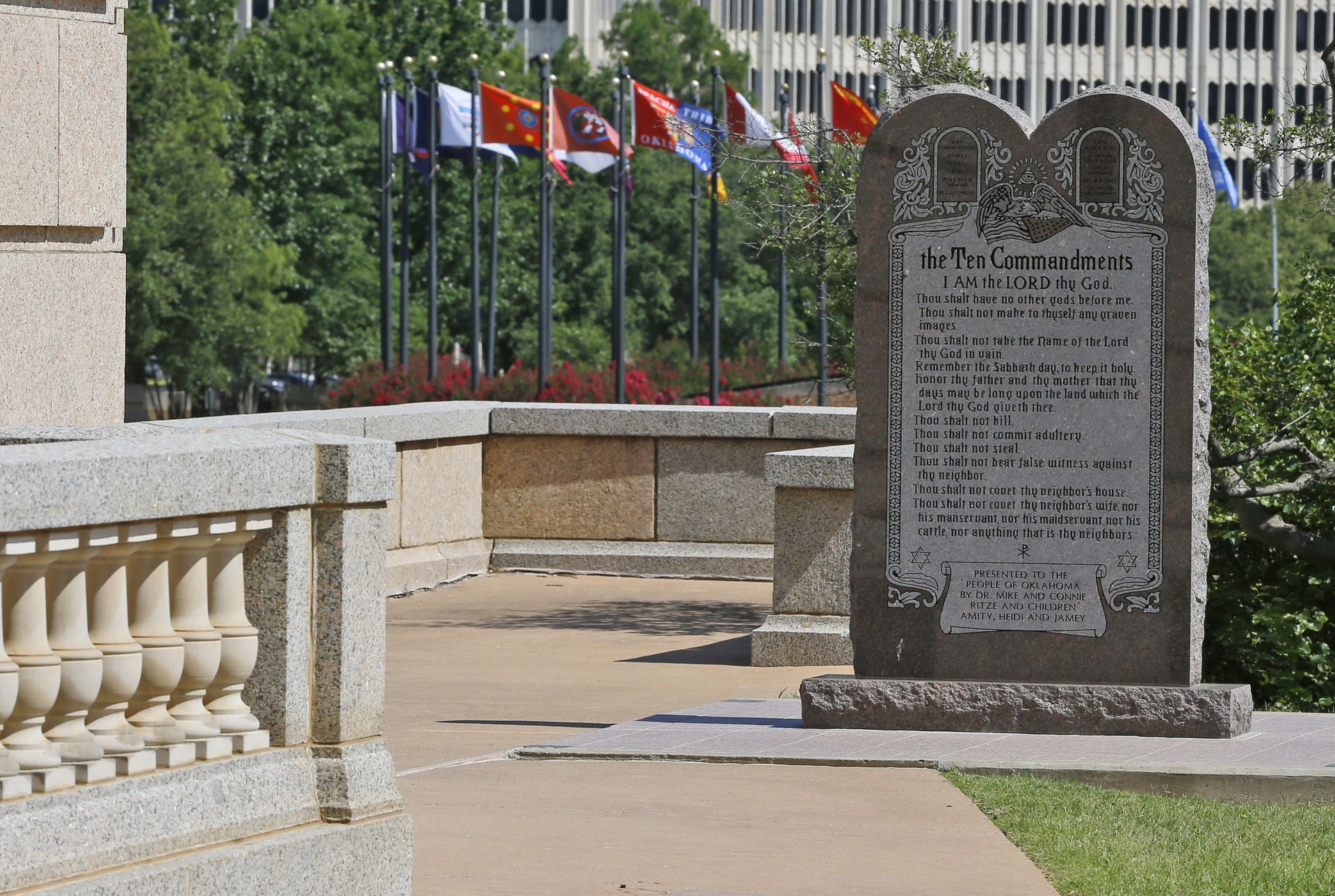Oklahoma’s supreme court says the state capitol’s Ten Commandments monument must go
A 6-foot-tall statue engraved with the Ten Commandments has been generating controversy ever since its installation on the grounds of Oklahoma’s state capitol in 2012. The monument was paid for with private funds, but critics argue that it’s a state-sanctioned endorsement of religion—and they argued this all the way up to the Oklahoma Supreme Court, which ruled today that the monument must be removed.


A 6-foot-tall statue engraved with the Ten Commandments has been generating controversy ever since its installation on the grounds of Oklahoma’s state capitol in 2012. The monument was paid for with private funds, but critics argue that it’s a state-sanctioned endorsement of religion—and they argued this all the way up to the Oklahoma Supreme Court, which ruled today that the monument must be removed.
The justices ruled, 7-2, that the monument is a religious symbol and its presence on the capitol’s grounds violates a provision in the state constitution banning the use of public property to benefit a religion.
Removing the monument will also remove the state’s headache of dealing with multiple other religious—or quasi-religious—groups that have petitioned to have their own monuments installed at the capitol since the Ten Commandments statue went up. Of these other groups, an association of Satanists created the biggest stir; the Satanists raised $30,000 on a crowdfunding platform to build a goat-headed statue, which they intended to have placed directly across from the Ten Commandments monument.
“The state can’t discriminate against viewpoints. If they’ve opened the door for one, they’ve opened it for all,” a spokesperson for the Satanists told VICE last year, saying he understood that “a judgment against the Ten Commandments will have ramifications for our monument as well, likely resulting in the removal of both.”
Now that the court has made that judgment, the Satanic statue will never touch the capitol grounds, and the Ten Commandments statue needs a new location, too.